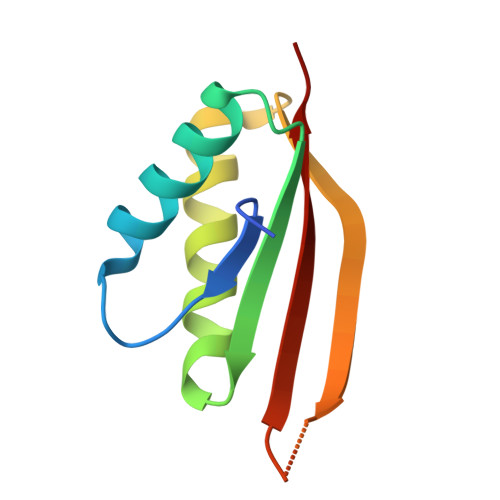Dual dimeric interactions in the nucleic acid-binding protein Sac10b lead to multiple bridging of double-stranded DNA.
Tang, S., Huang, C.H., Ko, T.P., Lin, K.F., Chang, Y.C., Lin, P.Y., Sun, L., Chen, C.Y.(2024) Heliyon 10: e31630-e31630
- PubMed: 38867953
- DOI: https://doi.org/10.1016/j.heliyon.2024.e31630
- Primary Citation of Related Structures:
8XAO, 8XAP, 8XAQ - PubMed Abstract:
Nucleoid-associated proteins play a crucial role in the compaction and regulation of genetic material across organisms. The Sac10b family, also known as Alba, comprises widely distributed and highly conserved nucleoid-associated proteins found in archaea. Sac10b is identified as the first 10 kDa DNA-binding protein in the thermoacidophile Sulfolobus acidocaldarius . Here, we present the crystal structures of two homologous proteins, Sac10b1 and Sac10b2, as well as the Sac10b1 mutant F59A, determined at a resolution of 1.4-2.0 Å. Electron microscopic images reveal the DNA-bridging capabilities of both Sac10b1 and Sac10b2, albeit to varying extents. Analyses of crystal packing and electron microscopic results suggest that Sac10b1 facilitates cooperative DNA binding, forming extensive bridged filaments via the conserved R58 and F59 residues at the dimer-dimer interface. Substitutions at R58 or F59 of Sac10b1 attenuate end-to-end association, resulting in non-cooperative DNA binding, and formation of small, bridged DNA segments in a way similar to Sac10b2. Analytical ultracentrifuge and circular dichroism confirm the presence of thermostable, acid-tolerant dimers in both Sac10b1 and Sac10b2. These findings attest to the functional role of Sac10b in organizing and stabilizing chromosomal DNA through distinct bridging interactions, particularly under extreme growth conditions.
- State Key Laboratory of Biocatalysis and Enzyme Engineering, School of Life Sciences, Hubei University, Wuhan, 430062, China.
Organizational Affiliation:
















